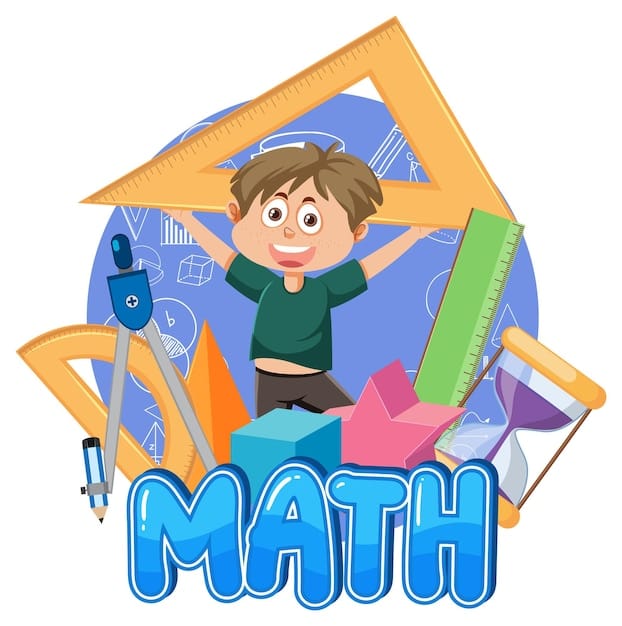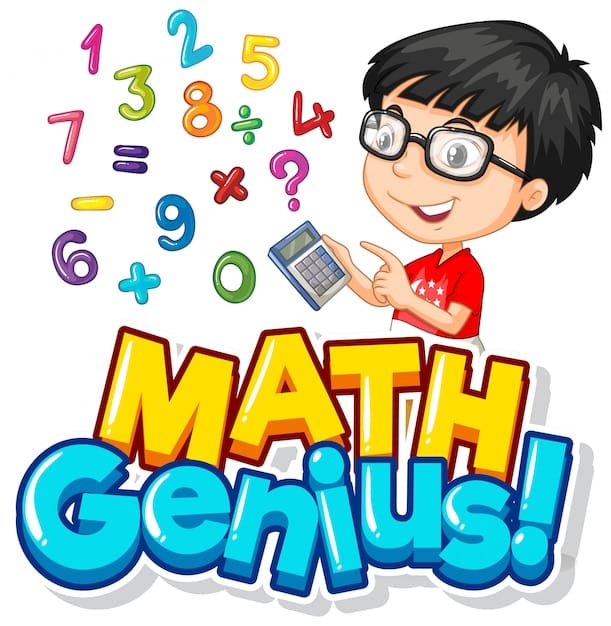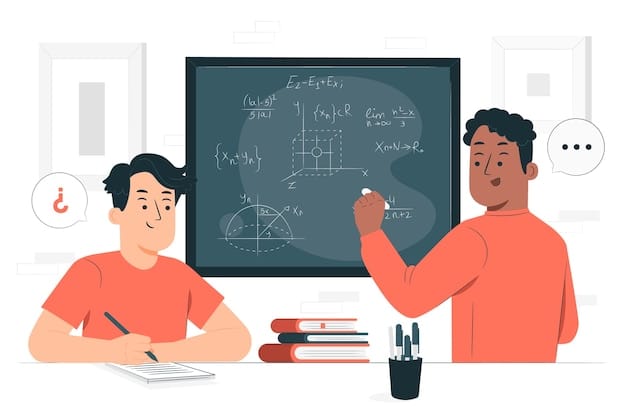Effective Math Intervention Strategies for Students Needing Support
Effective Math Intervention Strategies for Students Needing Support

Let’s face it—math doesn’t click for every student right away. While some students grasp mathematical concepts quickly, others need a bit more time, support, and creativity. And that’s perfectly okay! The truth is, teaching students math isn’t a one-size-fits-all process. Every student learns at their own pace, and strategies in math instruction must evolve to meet those unique needs.
That’s where math intervention strategies come into play. These evidence-based, research-based strategies help identify students who need support, then provide targeted lessons and explicit instruction to build math skills and deepen conceptual understanding. Whether it's using math manipulatives, visual representations, instructional videos, or engaging games, these strategies engage students and improve student performance.
From solving word problems in elementary school to mastering math fluency in middle school, this blog covers it all—problem-solving skills, basic facts, and even tools like personalized learning dashboards and graphic organizers to help every struggling student shine. These tools are especially valuable in elementary math interventions for learners who receive specific, targeted support.
Whether you're a teacher, parent, or school leader, you’ll find the tools to support students, monitor student progress, and create mathematics instruction that makes a difference—for one student or an entire class. Let’s explore how to teach math in ways that build confidence, foster educational progress, and make math success possible for all!
The Importance of Targeted Math Support for Struggling Learners
Math is more than just numbers; it's the foundation for logical reasoning, problem-solving, and critical thinking. Unfortunately, many students face challenges when learning math, especially in the early grades. Without the proper support, these difficulties can snowball over time, leading to long-term academic struggles, low confidence, and even math anxiety.
Targeted intervention strategies for math are vital because they allow educators to identify specific areas where a student is struggling and apply focused, effective instruction. Instead of offering generic review sessions, these math intervention strategies deliver personalized support tailored to each learner's needs. These strategies in math not only help students catch up and often surpass expectations by removing learning barriers early on.
When struggling learners receive targeted help through interventions for math, they're more likely to experience positive academic outcomes, participate more confidently in class, and develop a growth mindset. Intervention is not remediation; it is a proactive tool for closing the achievement gap and ensuring that every student has the opportunity to succeed in math.
Understanding Math Interventions and Their Impact
So, what are math interventions? They are structured teaching techniques designed to support learners who need additional instruction beyond the core curriculum. Unlike traditional classroom teaching, interventions for math are more focused and individualized.

Math interventions can take many forms:
One-on-one tutoring
Small group sessions
Scaffolded instruction
Use of technology-based tools
The key is to identify where the learner is struggling and to select math strategies that align with their specific needs. Diagnostic assessments play a crucial role in pinpointing skill gaps. For example, a student might excel in computation but struggle with word problems or conceptual understanding. Understanding the precise problem is half the battle.

🧠 95% of students can learn math at grade level with the right interventions (The Education Trust).
📚 Students in schools with structured math intervention systems showed 30% higher growth in standardized test scores within 1 year (Johns Hopkins study, 2021).
Examples of Effective Math Intervention Strategies:

Re-teaching using manipulatives: Helps reinforce abstract concepts using tangible tools.
Error analysis: Encourages students to understand their mistakes and correct misconceptions.
Visual aids: Number lines, charts, and graphic organizers provide structure and clarity.
Repetitive skill drills: Reinforces fluency in foundational operations like addition, subtraction, and multiplication.
These strategies, when applied thoughtfully and consistently, can transform a student’s relationship with math.
Effective Math Intervention Strategies for Different Learning Needs
Every student is unique, and so are their learning challenges. Some may struggle with basic arithmetic, while others might find geometry, algebra, or problem-solving daunting. Effective intervention strategies for math must cater to diverse learning profiles and cognitive styles.

Concrete-Representational-Abstract (CRA) Approach
This three-phase teaching strategy supports conceptual understanding:
Concrete: Using physical objects (like base-ten blocks or counters) to represent numbers.
Representational: Drawing visual models (like number lines or diagrams) that represent the concrete objects.
Abstract: Transitioning to numbers and mathematical symbols.
The CRA approach helps learners make connections between physical experiences and abstract thinking. It’s particularly effective for students with learning disabilities or those who need extra time to develop strategies in math and strengthen reasoning skills.
Peer Tutoring and Collaborative Learning
Peer tutoring involves pairing a student who has mastered a concept with one who needs more support. This collaborative approach builds confidence, communication skills, and a sense of ownership in both learners. Group problem-solving activities can also help students learn from diverse perspectives and strategies in math.

Explicit Instruction and Guided Practice
Explicit instruction means teaching math in a clear, direct, and structured way. Teachers model problem-solving steps aloud, followed by guided practice where students solve problems with support. This method reduces cognitive overload and provides a consistent framework for learning.
Frequent Progress Monitoring
Regularly assessing student performance helps educators track improvement and adjust instruction accordingly. Tools like progress charts, exit tickets, and formative quizzes provide real-time insights into student understanding. It also helps build accountability and motivation in students.
These math strategies help educators meet students where they are and provide the support needed to advance their skills, confidence, and love for math.

Elementary Math Interventions to Build a Strong Foundation
Young learners benefit from math instruction that is engaging, interactive, and developmentally appropriate. Early elementary math interventions are crucial for preventing small misunderstandings from turning into major learning gaps and ensuring students master essential strategies in math from the start.
Math Games and Manipulatives
Hands-on tools like dice, pattern blocks, and counters make abstract concepts more concrete. Games that reinforce counting, number recognition, and arithmetic also encourage math fluency while keeping the process fun and low-pressure.

Using Real-World Examples
Applying math to everyday life—like cooking, shopping, or telling time—makes learning more meaningful. These practical examples support math intervention strategies by making lessons more relatable. When students see math as a practical tool, they're more likely to stay engaged and retain what they learn.

Daily Math Fluency Drills
Timed practice sessions for addition, subtraction, multiplication, or division help improve speed and accuracy. Incorporating rhythm, repetition, and rewards can make fluency drills enjoyable and effective..
Evidence-Based Programs and Models
Program | Key Feature | Results |
|---|---|---|
Do The Math (Marilyn Burns) | Concrete to abstract learning | Improved conceptual fluency |
Bridges Intervention | Tiered RTI support + visual models | High engagement and progress |
TouchMath | Tactile learning for special ed students | Especially effective for K–3 |
Number Worlds | Cognitive learning pathways | Improved problem-solving |
Math Recovery | Individualized support for K–2 | Significant gains in early numeracy |
Visual Models for Problem-Solving
Bar models, ten frames, and arrays provide structured visual aids that simplify complex problems. These math intervention strategies help students organize their thinking and understand relationships between numbers.
When elementary students have a solid grasp of math fundamentals, they're better prepared for the abstract reasoning required in later grades.
Technology and Online Resources for Math Intervention
Digital tools and platforms are reshaping the way we approach math intervention. These resources offer personalized learning paths, gamification, and adaptive assessments to support diverse learners at all levels.
Popular Math Intervention Websites:
IXL Math: Offers skill-based practice with real-time analytics.
Khan Academy: Provides video lessons and interactive exercises.
Prodigy Math: A game-based platform that makes learning engaging.
Reflex Math: Focuses on building math fact fluency through adaptive games.

Features to Look For:
Data Tracking: Helps educators monitor progress and adjust instruction.
Scaffolded Lessons: Break down concepts into manageable steps.
Gamification: Increases motivation and time-on-task.
Multimodal Learning: Supports visual, auditory, and kinesthetic learners.
These tools are especially effective when combined with teacher-led instruction. For students who are shy or overwhelmed in class, the anonymity and self-paced nature of online platforms can be liberating.
Many schools now incorporate technology-based interventions as part of a blended learning model, allowing for differentiated instruction and continuous support, both in and out of the classroom.
Conclusion

Math intervention is not a one-size-fits-all solution; it's a flexible, evolving process rooted in empathy, evidence, and engagement. Whether you're working with a first grader learning to add or a middle schooler navigating algebra, the core principle remains the same: meet students where they are and help them move forward using effective math strategies.
By implementing the right intervention strategies for math, from visual models to tech-supported lessons, educators and parents can transform math from a source of frustration into a path of growth. Early identification, consistent support, and positive reinforcement are the building blocks of successful intervention.
With the right tools, every student can become a confident math learner. The key is patience, persistence, and a belief in the power of targeted instruction to make a lasting impact.
At Codeyoung, we believe that every student deserves a chance at math success—no matter their starting point. Our platform offers research based strategies and evidence based programs designed to identify students who need support and provide math interventions that build strong math skills. With a personalized learning dashboard, interactive instructional videos, and engaging games, Codeyoung makes teaching math fun and effective. Whether it's elementary school or middle school, we use visual aids, math manipulatives, and real life situations to help struggling students grasp key math concepts and boost student performance. Our mission? To help students grow in confidence, improve student progress, and fall in love with math through innovative, tech-powered teaching strategies.
Math Intervention Strategies – FAQs
What are the most effective math intervention strategies for struggling students?
The most effective math strategies for struggling students include scaffolded instruction, visual models, small group teaching, and math manipulatives. These math interventions strategies provide targeted support and build math fluency by focusing on individual student performance. School leaders and educators can also enhance outcomes by using evidence based and research based strategies that ensure each student learns at their own pace.
How can educators use intervention strategies for math to improve student confidence?
By applying math strategies like targeted lessons, visual aids, and metacognitive strategies, teachers can break down word problems into simpler steps. This helps identify students who need help early on and engage students in meaningful ways. When teaching strategies focus on small wins, students build confidence, especially when supported through mathematics instruction tailored to individual students.
What are some practical strategies for math that work for different age groups?
For elementary school students, playful tools such as math manipulatives, visual representations, and engaging games help lay the foundation for core math concepts. In middle school, practical applications, peer learning, and additional resources like digital tools are key. These age-specific math intervention strategies enable teachers to monitor student progress and keep students engaged throughout their learning journey.
How do math intervention websites support personalized learning?
Modern tools offer a personalized learning dashboard that adapts to the student’s needs, using real-time feedback and formative assessment. These platforms are designed to help students work at their own pace, offering additional resources for students who struggle. They also help identify students who may have learning disabilities, so that tailored support can be provided for better student performance.
What are the best elementary math interventions for building a strong foundation?
In elementary school, using concrete examples, visual aids, and math manipulatives helps students tackle math problems effectively. Reinforcing math fluency with daily practice and problem solving through real-life context encourages deeper conceptual understanding. Such approaches are vital for students who struggle and promote steady student progress through grade-level content.
How can students benefit from math interventions for middle school?
Middle school interventions bridge earlier learning gaps and prepare students for complex math concepts like algebra, fractions, and geometry. These math interventions help students master problem solving skills, especially when supported by visual representations and targeted lessons. Using evidence based practices ensures that each student learns in a way that supports their individual growth and keeps students engaged.